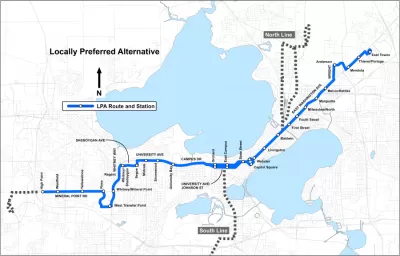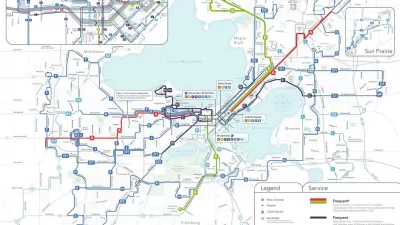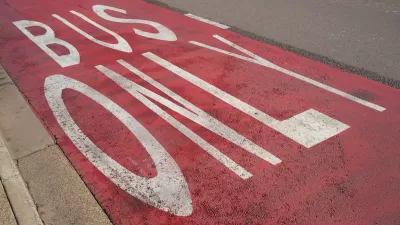Some portions of the bus rapid transit (BRT) system planned for Madison, Wisconsin will resemble the fully realized BRT systems more common in other parts of the world.

"Madison’s proposed $160 million Bus Rapid Transit system may run its special buses on dedicated center lanes with boarding stations on medians on some of the city’s main thoroughfares," reports Dean Mosiman from Wisconsin.
The center lane would only be built on some portions of the BRT route, according to Mosiman, wile other stretches would run on side lanes while mixing with car traffic. The dedicated center lanes, proposed for "Blair and Milwaukee streets and other stretches of East Washington Avenue on the East Side and on Whitney Way and Mineral Point Road on the West Side," would deliver more consistent service while also preserving bike lanes and street parking on those stretches, according to the article.
Back in March, the Madison City Council and the Greater Madison Area Metropolitan Planning Organization approved a preferred alternative route for the line, which will include 27 stations served by five- to 15-minute headways running from 5 am to midnight on weekdays, and 15- to 30-minute headways from 7 am to 11 pm on weekends.
"About 83,000 residents would live within a half-mile of stations, while about 110,000 jobs would be within that distance," according to Mosiman.
Madison Metro Transit planners are making refinements to the plan while waiting for approval for $107 million in federal money toward the total $160 million needed for the project.
FULL STORY: Madison may push Bus Rapid Transit system to center lanes

Alabama: Trump Terminates Settlements for Black Communities Harmed By Raw Sewage
Trump deemed the landmark civil rights agreement “illegal DEI and environmental justice policy.”

Study: Maui’s Plan to Convert Vacation Rentals to Long-Term Housing Could Cause Nearly $1 Billion Economic Loss
The plan would reduce visitor accommodation by 25% resulting in 1,900 jobs lost.

Planetizen Federal Action Tracker
A weekly monitor of how Trump’s orders and actions are impacting planners and planning in America.

Waymo Gets Permission to Map SF’s Market Street
If allowed to operate on the traffic-restricted street, Waymo’s autonomous taxis would have a leg up over ride-hailing competitors — and counter the city’s efforts to grow bike and pedestrian on the thoroughfare.

Parklet Symposium Highlights the Success of Shared Spaces
Parklets got a boost during the Covid-19 pandemic, when the concept was translated to outdoor dining programs that offered restaurants a lifeline during the shutdown.

Federal Homelessness Agency Places Entire Staff on Leave
The U.S. Interagency Council on Homelessness is the only federal agency dedicated to preventing and ending homelessness.
Urban Design for Planners 1: Software Tools
This six-course series explores essential urban design concepts using open source software and equips planners with the tools they need to participate fully in the urban design process.
Planning for Universal Design
Learn the tools for implementing Universal Design in planning regulations.
Caltrans
Smith Gee Studio
Institute for Housing and Urban Development Studies (IHS)
City of Grandview
Harvard GSD Executive Education
Toledo-Lucas County Plan Commissions
Salt Lake City
NYU Wagner Graduate School of Public Service





























